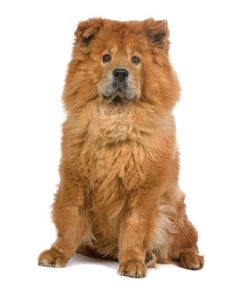Samoyed: The Smiling Sled Dog
The Samoyed, often referred to as the “Smiling Sammie,” is a breed known for its friendly disposition, fluffy white coat, and distinctive “smile.” Originally bred by the nomadic Samoyede people of Siberia, these dogs were used for herding reindeer, pulling sleds, and keeping their owners warm in the harsh Arctic climate.
Appearance
- Coat: Samoyeds have a thick, double-layer coat that is soft and fluffy. The outer coat is straight and harsh, while the undercoat is dense and woolly. Their coat is typically pure white, but can also be cream or biscuit.
- Eyes: Samoyeds have dark, almond-shaped eyes that are expressive and friendly, contributing to their characteristic “smile.”
- Build: This breed is medium to large in size, with a strong, muscular build. They have erect, triangular ears and a tail that curls over their back.
Temperament
- Friendly and Sociable: Samoyeds are known for their friendly and sociable nature. They are great with children and get along well with other pets, making them excellent family dogs.
- Playful and Energetic: This breed is playful and energetic, requiring plenty of exercise and mental stimulation. They enjoy activities such as hiking, running, and playing fetch.
- Intelligent and Gentle: Samoyeds are intelligent and gentle dogs. They are eager to please and respond well to positive reinforcement training methods.
Health and Care
- Grooming: Due to their thick coat, Samoyeds require regular grooming to prevent matting and to control shedding. Brushing several times a week and occasional baths are recommended. During shedding season, daily brushing is necessary.
- Exercise: Samoyeds need a good amount of exercise to stay healthy and happy. Daily walks, playtime, and activities that engage their mind and body are important.
- Health Concerns: Common health issues in Samoyeds include hip dysplasia, progressive retinal atrophy (PRA), and diabetes. Regular veterinary check-ups and a balanced diet are essential for maintaining their health.
Training
- Early Socialization: Socializing Samoyeds from a young age is important to ensure they grow into well-mannered adults. Exposure to different people, environments, and other animals is beneficial.
- Positive Reinforcement: Training a Samoyed requires patience and positive reinforcement. They respond well to praise, treats, and consistent training routines.
- Mental Stimulation: Due to their intelligence, Samoyeds benefit from activities that challenge their minds, such as puzzle toys, obedience training, and agility courses.
History
- Ancient Origins: The Samoyed breed has ancient origins and was developed by the Samoyede people of Siberia. They were used for herding reindeer, pulling sleds, and providing warmth by sleeping with their owners.
- Exploration Fame: Samoyeds gained fame during polar expeditions in the late 19th and early 20th centuries. Their endurance and ability to work in extreme conditions made them valuable assets to explorers.
Unique Traits
- Samoyed Smile: One of the most distinctive features of the Samoyed is their “smile,” which is caused by the shape of their mouth and the way their lips curve upward. This expression gives them a friendly and approachable appearance.
- Vocal Nature: Samoyeds are known to be vocal and enjoy “talking” to their owners. They use a range of sounds, from barking to howling, to communicate.
The Samoyed is a breed that embodies beauty, intelligence, and a joyful spirit. Whether as a working dog or a cherished family pet, the Samoyed’s affectionate and playful nature makes it a wonderful companion for those who can provide the love and care they need.
Information to know:
Website: https://bomtopix.com/
Phone number: 303-287-5547






Reviews
There are no reviews yet.